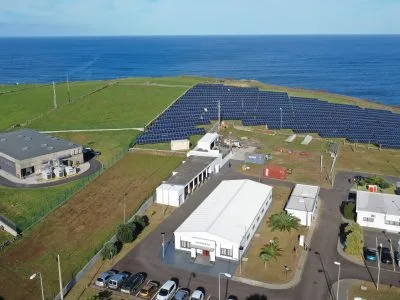Storage Solutions Corner: Samsung
With just a few weeks to the 6th Forum, we feature a new section, Storage Solutions Corner, where we ask our sponsors about their energy storage products, business expansion, and developments in the industry. Today, we are pleased to feature answers from our Gold Sponsor, Samsung.
What advantages would the Community Energy Storage system have over the Residential Energy Storage system and vice versa?
Community Energy Storage Systems(CES) have an advantage over the Residential Energy Storage System(RES) because it can be placed in one location. In terms of space consumption, it would be better and since we would have to build-in Power Conversion System (PCS) for each RES, it would be more efficient. In terms of its function, I would say that they are no different apart from the capacity, since the CES will be made to distribute to multiple houses.
CES and RES are different because the companies that sell them are different. CES is aimed at restoring energy and providing electricity saving plans for a community, while RES is intended for a single home. In others words, a CES would most likely be bought by construction companies or regional facility maintenance service providers, whereas RES can be directly bought by home owners.
In terms of the advantage, since CES is larger in scale than RES, the price per kWh would most likely be less. In addition, since each RES is in need of a PCS, having only one PCS for one CES is more advantageous in reducing redundancy. In terms of function, there does not seem to be any difference, as they possess the same purpose.
Who is the intended user of your Peak Shifting (Peak Shaving) product?
Our main user for our Peak Shifting product would be utility companies and owners of commercial buildings. What you would need to understand is that our MW scale ESS is made for the purpose of stabilizing the grid for renewable energy and to save electricity for commercial buildings. So basically main users will be grid related personnel and owners of commercial buildings and/or factories.
Has the Net Zero Energy House become a reality?
We actually have a Net Zero Energy House in Korea, which is a model house and is used as a demonstration. In order for this to be a reality, we would need construction companies to adopt these eco-friendly materials and facilities which are very expensive. Currently Samsung plans to work with affiliate companies to make this possible, but the project is still in its infant stage.
Do you think the ESS projects like the Jeju Smart Grid Project and Daegu Residential Project have met your objectives?
Jeju Smart Grid Project and Daegu Residential Project are still at the stages of procuring data so I cannot conclude that it has met our objectives.
What kind of storage technology (e.g. lithium-ion battery) are all the ESS applications using? Are there new storage technologies you are currently researching on or are interested in?
All our energy storage systems use Lithium-ion battery technology. It is lithium-manganese-oxide based and are enclosed in a prismatic outer layer. All our current new storage technologies are in R&D stage and is beyond my reach to disclose this information. We also sponsor scholarships in universities for conducting of research that might advance our storage technology.
Which energy storage innovation do you most believe in?
I believe that energy storage will become an essential part in our lives as energy procurement through renewable energy becomes an essential part in our everyday lives. I don’t think that there is just one innovation that I can choose.
How do you think the energy storage industry is evolving, especially in Asia?
The energy storage industry is evolving in different ways. Basically, Asia is estimated to evolve in the telecom tower market(India), residential energy storage(Japan/EU), commercial/UPS(Korea, Japan). As for MW scale, the US looks most promising.
How can we develop standards for the energy storage industry?
Samsung customizes its products to suit goverment policies in different countries because these policies, especially in Europe, are very case sensitive. In other words, without the government approval it would be hard to commercialize our products, for safety policies are a number one priority here at Samsung. In addition, our products have flexible design (modular design) which helps meet the needs of various customers all around the globe. Also, voltage requirements differ depending on the country which makes our product suitable to match the needs of all countries.
 Samsung is a Gold Sponsor for the 6th Energy Storage World Forum.
Samsung is a Gold Sponsor for the 6th Energy Storage World Forum.
If you want to know more about this and other topics directly from end users of energy storage technologies join us at one of these annual events: The Energy Storage World Forum (Grid Scale Applications), or The Residential Energy Storage Forum, or one of our Training Courses.



